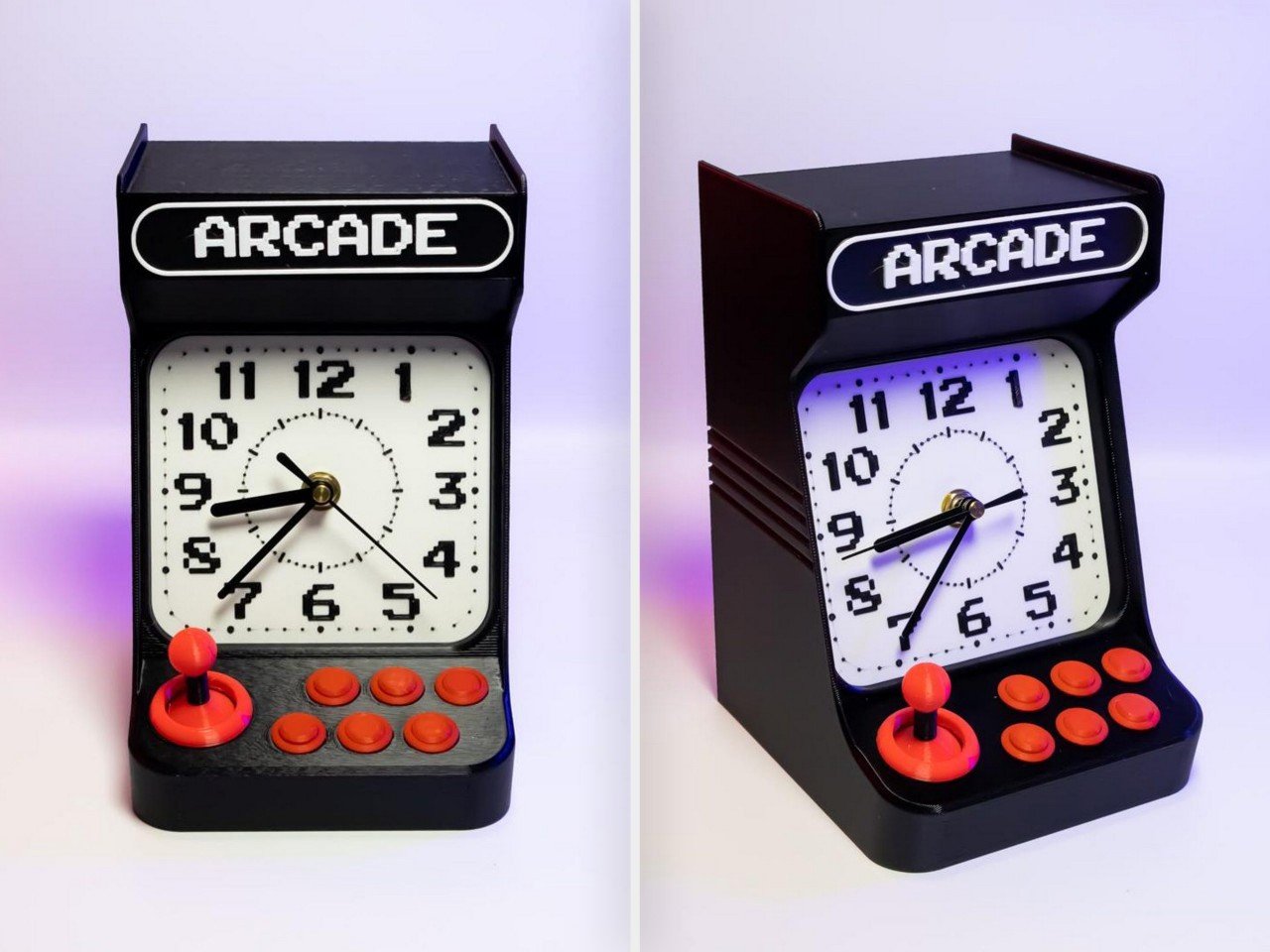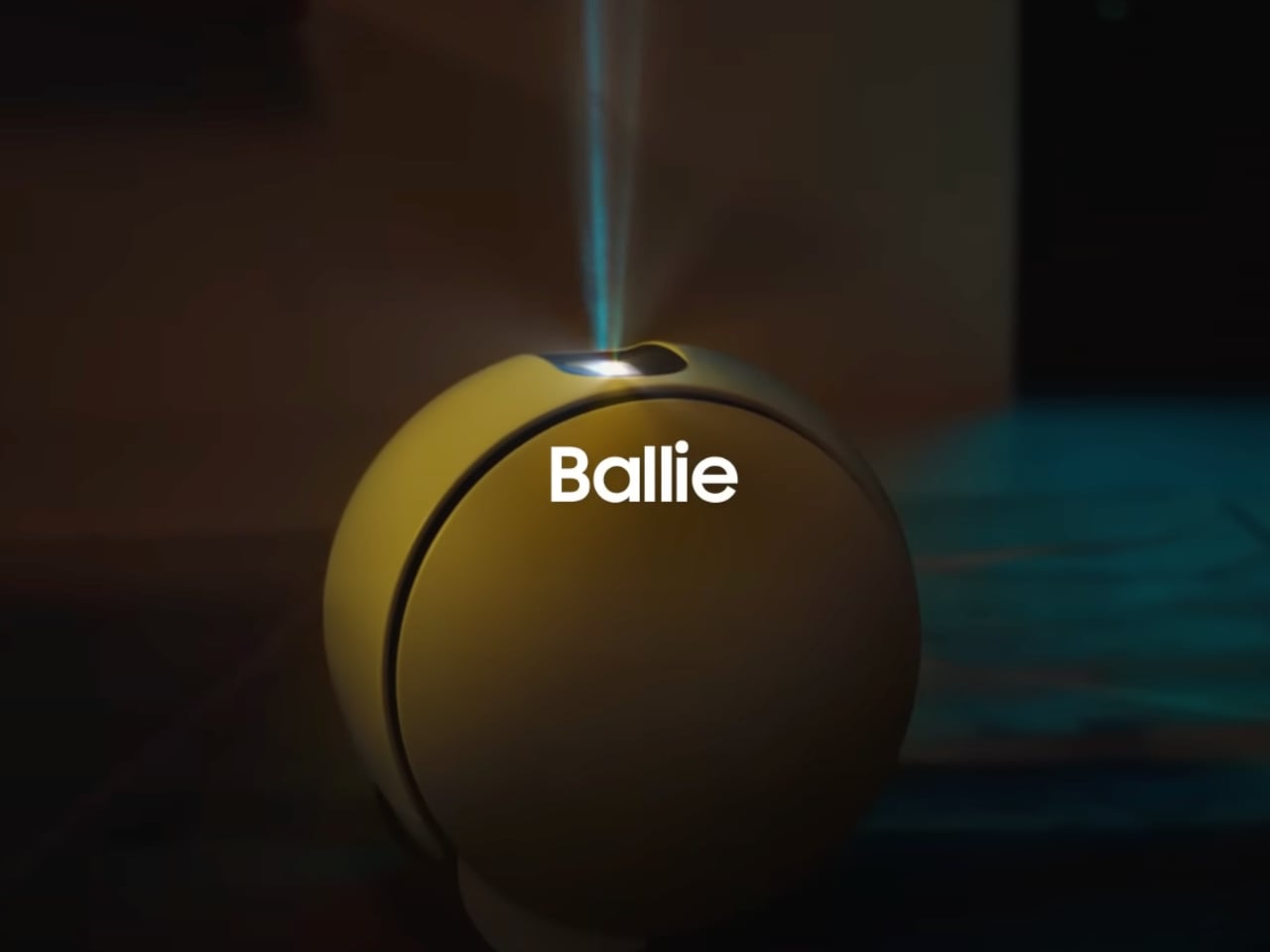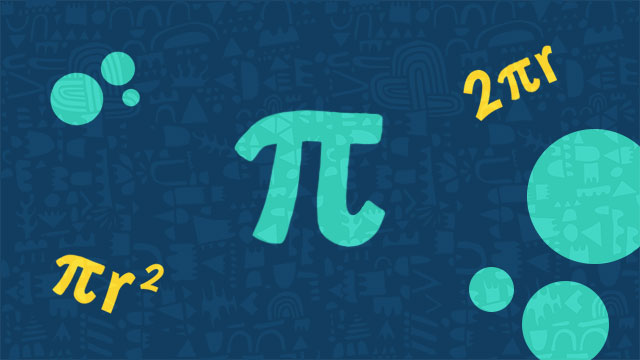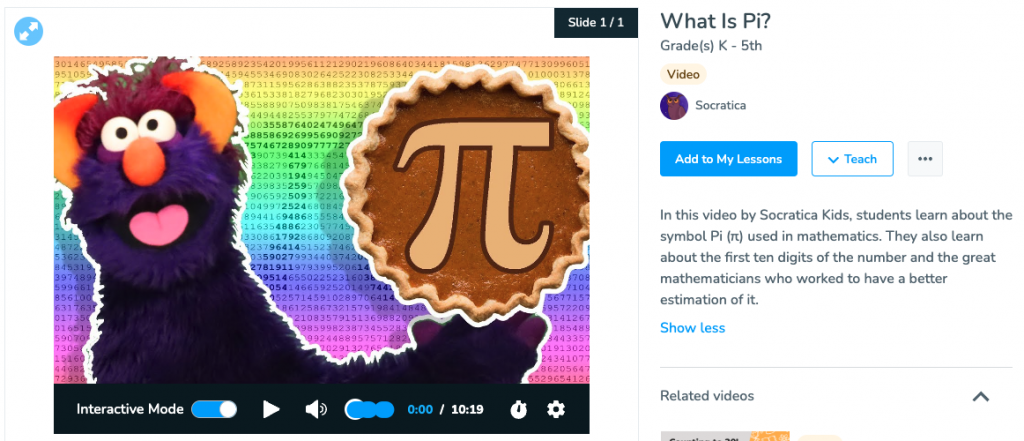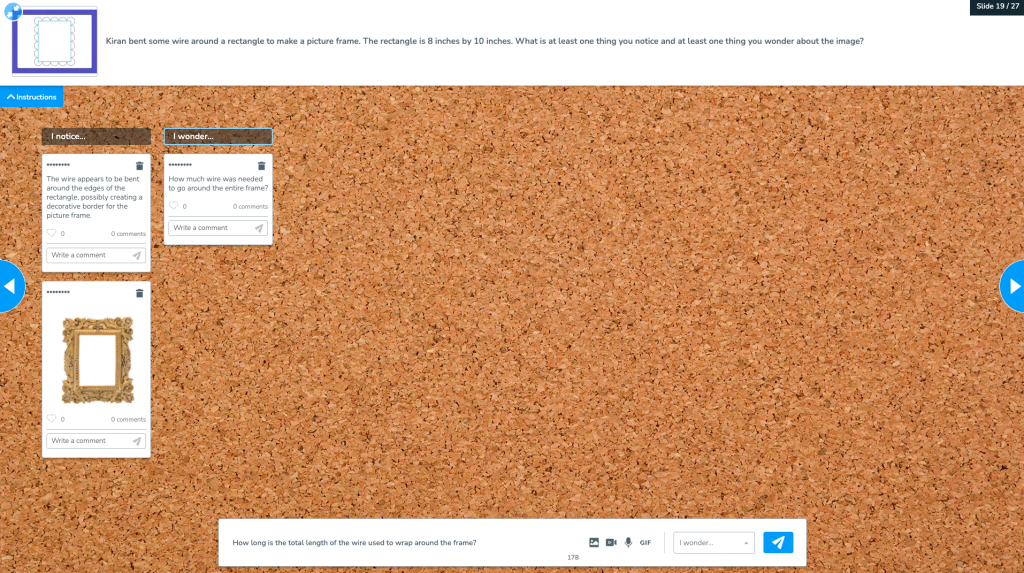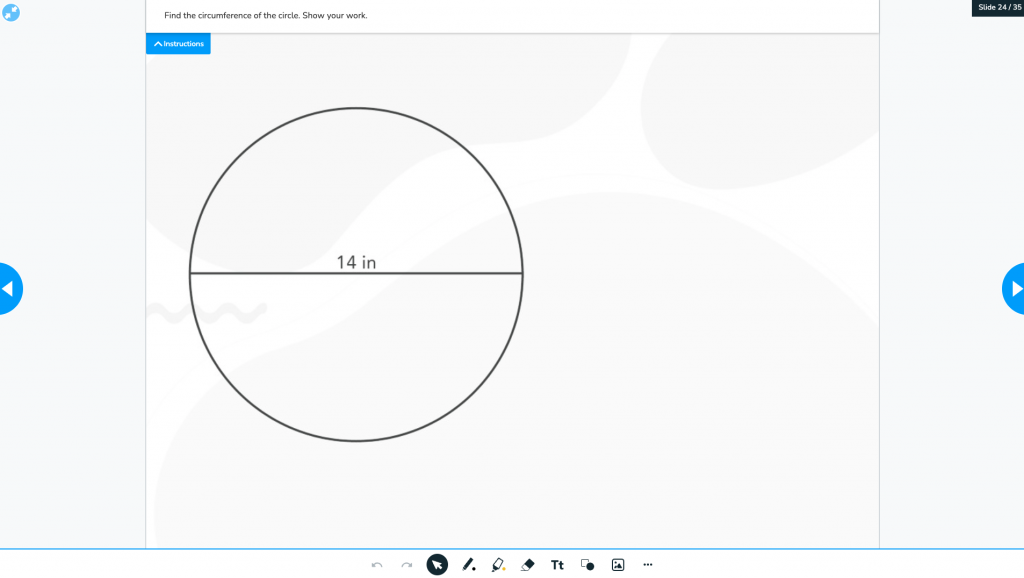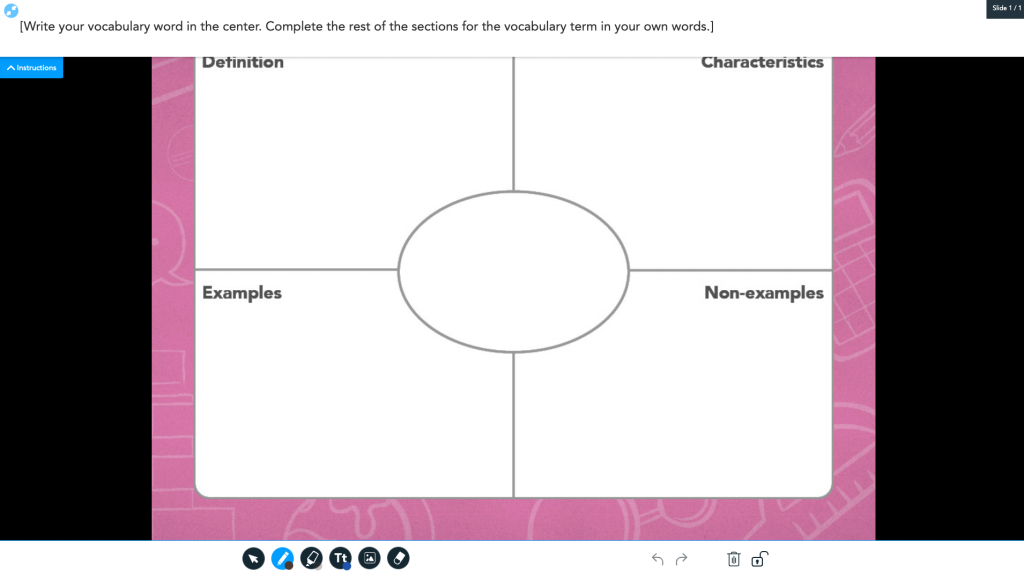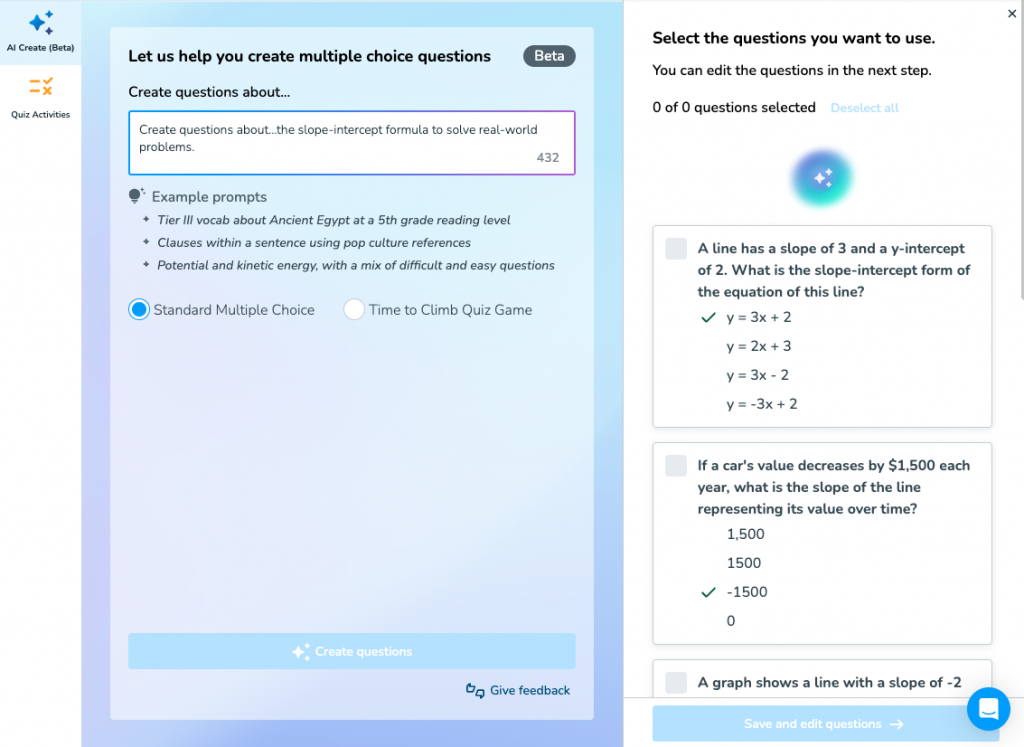Pi Day activities for elementary and middle school
Use engaging Pi Day activities for elementary and middle school students. Explore math lessons, videos, and activities to celebrate 3.14! The post Pi Day activities for elementary and middle school appeared first on Nearpod Blog.

Every year, everyone from teachers and students to math and science enthusiasts around the world celebrates Pi Day on March 14th. Pi, of course, is the ratio of the circumference of a circle to its diameter, represented by the Greek letter pi (π) and pronounced as “pie.” Keep reading to explore Pi Day activities you can use in your elementary and middle school classrooms!
Why is Pi Day on March 14?
So, why March 14th? That one’s easy—the first three numbers of pi, 3.14, correspond with the date of March 14th, or 3/14. But let’s back up a bit.
The ancient Babylonians used the ratio of pi more than 4,000 years ago, though the actual number remained a mystery. It was the Greek mathematician Archimedes who discovered the first few decimals of pi in 250 B.C.E. Many years later, in 1706, Welsh mathematician William Jones was the first to use the Greek letter pi (π) to represent this number.
It is believed that the first unofficial Pi Day celebration occurred in 1988, held by a physicist at the San Francisco Exploratorium, and included the eating of actual fruit pies. In 2009, Congress officially recognized Pi Day as a national holiday. Since then, teachers globally have embraced Pi Day as a way to make math more fun and relatable for students.
Make Pi Day math extra special this year with Nearpod
If you already use and love Nearpod, there are so many ways to incorporate it into your Pi Day activities. Nearpod’s comprehensive math lessons make it easy to make math instruction interactive and engaging on Pi Day (or any day of the year). By giving your students hands-on experiences to explore real-world mathematical concepts, they will better understand the applications to their daily lives.
If you have a school or district account, you can check out Nearpod Math, which offers a robust library of K-8 supplemental curricular resources, including math manipulatives. From engaging lessons to interactive videos to gamified activities, Nearpod will support your daily math teaching as well as your Pi Day ideas and plans.
New to Nearpod? Teachers can sign up for a free Nearpod account below to access these resources, interactive activities, and engaging lessons. Administrators can schedule a call with an expert to unlock the full power of Nearpod for schools and districts.
Pi Day activities for elementary and middle school students
1. Explore what Pi is
Pi is quite an abstract concept. The National Council of Teachers of Mathematics (NCTM) suggests that students explore the area and circumference of circles in 7th grade; however, the concept can be introduced much earlier, beginning in elementary school. If you haven’t already piqued students’ curiosity about the wonderful world of geometry and pi, Pi Day is the perfect time to do so. Take a look at the following Nearpod lessons and remember that you can add to or revise the activities as needed for your students’ learning objectives:
- What is Pi? (Grades K-5): In this video from Socratica Kids, students are introduced to the mathematical concept of pi and how to memorize its first 10 digits.
- Pi in the Sky: Pi Day (Grades K-5): This Numberblocks video touches on pi as students count from 1 to 4.
- Pi video (Grades 6-8): In this short video, students will learn the basics of pi and what makes it such a unique number.
- Pi – Flocabulary (Grades 6-8): This 30-minute lesson featuring a Flocabulary topic spark pulls in students through a hip-hop video and interactive activities.
- Circles: What is Pi? (Grades 6-12): This video from Math Antics focuses on vocabulary associated with circles and pi.
2. Find circles in everyday life
Did you know that circles have infinite lines of symmetry? That’s why this visually pleasing shape is considered by many to be a symbol of perfection, unity, and infinity. Celebrate circles with some original artwork as part of Pi Day activities for elementary students (see picture book recommendations below to further explain the concept of pi). Grab colored pencils or pens and spin a spirograph to make abstract designs. Or hand out cotton swabs, which can be dipped in paints to create dotted spirals of various colors.
Then, challenge your students to brainstorm collectively on Nearpod’s Collaborate Board to identify where they might encounter circles in their daily lives. Start by hunting around the classroom and school for real-world instances of circles. To enhance engagement, consider including reference media next to the prompt, such as an image or video, to illustrate examples of where circles can be found—in the classroom, at home, or in the community.
Teachers can also organize responses by category, such as nature, everyday items, or examples from their town, to make the activity even more meaningful. Students can then share their responses on the interactive bulletin board using text, video, voice, images, and GIFs. They can also interact with their peers’ responses by “liking” and commenting.
Remember that you can revise any existing Nearpod lessons and save them as your own. Check out these Pi Day activities for middle school and early high school students:
- Circles & Pi: 7 (Grade 7): Students will learn about circles and pi as they explore real-life connections to circles and learn how to find the area and circumference of circles.
- Applying Circumference (Grade 7): Students will explore how to use different approximations of pi and their knowledge of radius, diameter, and circumference to solve problems (lesson available with Nearpod Math).
3. Highlight math talk
Circles are one of the first two-dimensional shapes that kids learn about, both in the classroom and in the real world. Circles have no corners and only one side. The perimeter of a circle should be equidistant to the center, allowing the circle to be split down the center in any direction into identical halves.
Bring out the scissors and have students trace and cut out circles of all different sizes on colored construction paper. Then, ask them to cut the circles into various pieces that represent the key vocabulary such as semi-circle, sectors, etc. Geometry is a great way to bring math talk into discussions about terms like symmetry, diameter, radius, and circumference, as well as chord, sector, and secant.
Pi presents an opportunity to take a hands-on approach with Nearpod’s interactive Draw It activity. Upload this template of the Frayer model and use Draw It to further explore where aspects of circles appear in everyday life. The Frayer model is a concrete way to build a robust vocabulary.
4. Know your value—place value
Pi is an eternal or endless number with an infinite number of digits, often rounded up to 3.14, and has no pattern. Start by engaging your students in a simple dice game. Create a paper template with squares above the first ten digits of pi: 3.1415926535. Give each student a die and see who can roll all ten numbers first.
Transition into more direct instruction on place value as part of your Pi Day lesson plans. You may want to use one of Nearpod’s many lessons, videos, or turnkey interactive activities such as Matching Pairs.
- Lesson: What Is the Decimal Value? (Grade 5): In this lesson, students learn how to read and write decimal values and identify patterns on the place value chart.
- Video: Decimal Place Value (Grades 5-8): In this Kahn Academy video, students learn about the place value of decimals.
- Activity: Decimals: Place Value: 5 (Grade 5): In this Matching Pairs activity, students strengthen their understanding of decimals by identifying their place value.
5. Make pi friendship bracelets
Since pi goes on forever without repeating, it is considered an irrational number, meaning there is no fraction equivalent to pi. Instead, pi is represented as a decimal that goes on forever. You can explore the many decimals of pi by making pi-themed friendship bracelets.
You can designate a different bead color for each number 0 to 9. Have your students string the beads in order according to the sequence of numbers found in pi. You could have students represent the sequence by using black beds for odd numbers and white beads for even numbers.
Don’t have the supplies for bracelet-making? Create a virtual beading project with Nearpod’s Drag & Drop activity. Upload images of colored beads or circles and have your students drag and drop the corresponding “beads” into the proper sequence.
6. Measure twice, cut once
Remember the above Collaborate Board activity where students gathered real-world examples of circles around us? Now you can extend that project by asking students to measure everyday items. But you can start with what you have in front of you.
Assemble a bunch of everyday circular, spherical, and cylindrical objects—think: paper plate, orange, roll of tape, oatmeal container, bottle caps, etc.—and have students measure the objects’ circumference and diameter. Younger students will have the “a-ha” that rulers don’t bend—so problem-solve together using a length of yarn alongside rulers to measure the circumference and diameter of each item. Then have them divide the circumference by the diameter. Guess what the answer will be 100% of the time.
If you have a school or district account, don’t forget that you can lean on the power of Nearpod’s AI Create feature to create a formative assessment Quiz or Time to Climb activity to gauge your students’ understanding of pi and other mathematical concepts.
7. Add reading to your math
Celebrate Pi Day by incorporating some reading into your math instruction. Check out these Pi Day books to celebrate Pi Day (and math in general).
You can level up your read-aloud with Nearpod’s Interactive Videos. You can create your own, or, if you have Student Accounts enabled, your students can create their very own.
First, students can record each other reading a picture book using any device with video recording capabilities to practice fluency and intonation. Then, they can upload the video to Nearpod and pepper in some quick checks for understanding. Students can upload their interactive videos to a Collaborate Board in order to gather feedback from each other.
Celebrate with Nearpod Pi Day ideas!
International Pi Day activities coupled with Nearpod’s interactive activities and lessons are a great way to celebrate students’ math prowess and accomplishments while reminding them of math’s role in our everyday lives. Mark your calendar for March 14th and ask your colleagues about their Pi Day lessons and activity ideas—like pi, creativity is never-ending!
New to Nearpod? Teachers can sign up for a free Nearpod account below to access these resources, interactive activities, and engaging lessons. Administrators can schedule a call with an expert to unlock the full power of Nearpod for schools and districts.
The post Pi Day activities for elementary and middle school appeared first on Nearpod Blog.



















































